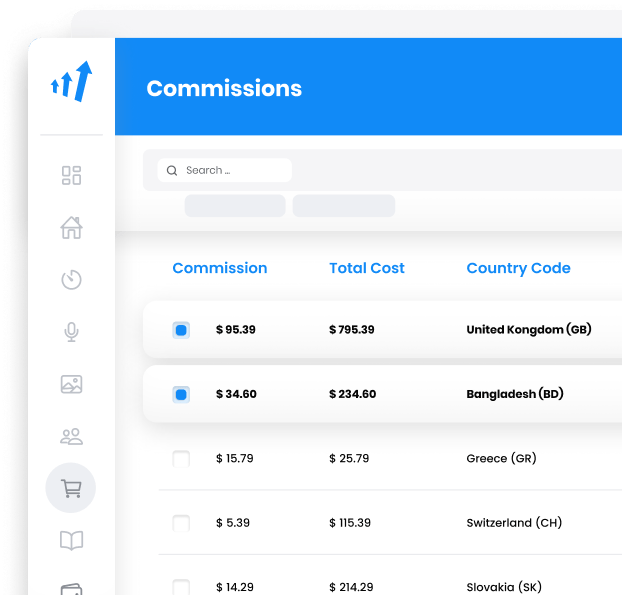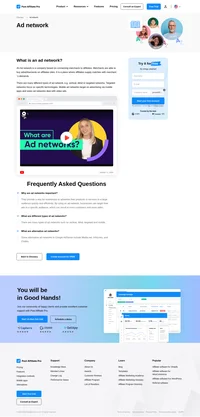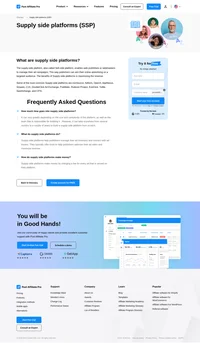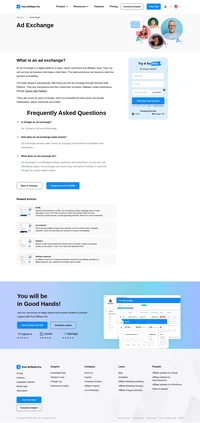What is real-time bidding?
Real-Time Bidding (RTB) is a pivotal process within the realm of programmatic advertising. It represents an automated auction system that operates in the milliseconds before a webpage loads, enabling advertisers to bid for ad impressions in real time. This method allows advertisers to purchase ad space on a per-impression basis, ensuring that their ads reach the most relevant audience at the opportune moment. RTB is integral to programmatic advertising, which utilizes technology to automate the buying and selling of ad space.

How Does Real-Time Bidding Work?
RTB involves several crucial participants and technological platforms working in unison to conduct an auction for each ad impression:
Key Participants:
- Advertiser: This is the entity aiming to promote its products or services. Advertisers employ a Demand-Side Platform (DSP) for placing bids on ad impressions.
- Demand-Side Platform (DSP): A DSP is a technological platform that enables advertisers to bid on ad inventory automatically. These platforms assess available impressions based on targeting criteria established by the advertiser.
- Publisher: The publisher owns the website or app offering ad space. They utilize a Supply-Side Platform (SSP) to sell ad impressions.
- Supply-Side Platform (SSP): An SSP aids publishers in managing and selling their ad inventory. It communicates with multiple ad exchanges to present impressions to potential buyers.
- Ad Exchange: Serving as a digital marketplace, the ad exchange is where publishers and advertisers convene to buy and sell ad inventory. It facilitates the RTB process by connecting DSPs and SSPs.
The RTB Process:
- User Visit: When a user visits a webpage or an app, the SSP sends a bid request to the ad exchange, indicating the availability of ad space.
- Bidding: DSPs receive the bid request and decide whether to bid based on user data and targeting criteria. If they opt to bid, they submit their bid amount.
- Auction: The ad exchange conducts an auction, with the highest bidder winning the ad impression.
- Ad Display: The winning ad is served to the user almost instantaneously as the page loads.
RTB in Affiliate Marketing
In affiliate marketing, RTB empowers marketers to strategically place ads on publishers’ websites via automated bidding processes. This optimizes ad spend by effectively targeting specific audiences, ensuring that ads are displayed to users most likely to engage with the offer.
Benefits of Real-Time Bidding
For Advertisers:
- Precise Targeting: RTB allows advertisers to target specific audiences using real-time data, enhancing the relevance and effectiveness of their ads.
- Cost Efficiency: Advertisers pay only for impressions that align with their targeting criteria, reducing wasteful ad expenditure.
- Flexibility and Control: Advertisers can adjust bids and targeting parameters in real-time to optimize campaign performance.
For Publishers:
- Increased Revenue: RTB exposes ad inventory to a broader range of buyers, often resulting in higher bid prices and increased revenue.
- Inventory Management: Publishers can manage inventory more effectively, selling unsold space at competitive prices.
- Audience Insights: RTB provides valuable data on which audience segments are most attractive to advertisers, aiding publishers in tailoring their content strategies.
Challenges and Considerations
Brand Safety:
RTB can sometimes lead to ads appearing alongside inappropriate or irrelevant content, potentially damaging brand reputation. Advertisers can mitigate this risk by setting up exclusion lists and employing brand safety tools.
Ad Fraud:
Automated ad buying can be susceptible to ad fraud, where bots generate fake impressions or clicks. Implementing fraud detection systems is crucial to protect ad spend.
Data Privacy:
RTB heavily relies on user data for targeting decisions. Advertisers and publishers must comply with data protection regulations like GDPR and CCPA to ensure user privacy and data security.
RTB and Programmatic Advertising
While RTB is a fundamental component of programmatic advertising, it is not the sole method. Other programmatic approaches include:
- Private Marketplace (PMP): An invite-only auction where publishers offer specific inventory to selected advertisers.
- Programmatic Guaranteed: Direct deals between advertisers and publishers for premium ad space, circumventing the need for an auction.
RTB in the Future
As digital advertising evolves, RTB is expected to adapt to new technologies and market demands. Key trends include:
Privacy-Friendly Solutions: Developing alternative targeting methods that respect user privacy in a cookieless future.
AI and Machine Learning: Enhancing targeting and campaign optimization through advanced data analysis.
Connected TV (CTV): Expanding RTB to encompass ads on streaming platforms, targeting viewers with precision.

Understanding Real-Time Bidding in Affiliate Marketing
With the ability to make split-second decisions on ad placements, RTB offers advertisers an unprecedented level of efficiency and precision. But what exactly is real-time bidding, and how can it benefit your affiliate marketing efforts? Let’s delve into the intricacies of RTB and explore its potential in enhancing your affiliate marketing strategy.
What is Real-Time Bidding?
Real-time bidding is an automated auction process that enables advertisers to bid on ad space in milliseconds. This process takes place on a cost-per-thousand-impressions (CPM) basis, meaning you pay for every thousand views of your ad. The highest bidder wins the ad placement, allowing for highly targeted advertising that can reach the most relevant audiences.
The RTB Ecosystem
RTB operates through a combination of platforms that streamline the ad buying process:
- Demand-Side Platforms (DSPs): These enable advertisers to purchase and manage ad space. Google Ads is a prime example of a DSP.
- Ad Exchanges: These function as digital marketplaces connecting advertisers and publishers. Google Ad Manager includes a robust ad exchange platform.
- Supply-Side Platforms (SSPs): Used by publishers to sell their ad space, SSPs ensure that ad placements are filled efficiently.
How Does Real-Time Bidding Work?
The RTB process begins the moment a user clicks on a link to visit a website. Here's a step-by-step breakdown:
- Ad Request: As the site loads, the publisher sends information about available ad spaces to an SSP.
- User Profiling: The SSP analyzes user cookies to understand their interests and demographics, ensuring ad relevance.
- Bidding: DSPs evaluate the user’s profile and place bids for the ad space.
- Winner Selection: The SSP selects the highest and most relevant bid, and the winning ad is displayed to the user within milliseconds.
For affiliate marketers, this means the ability to target specific audiences with precision, ensuring that your ads are seen by individuals who are most likely to convert.
Why Use Real-Time Bidding in Affiliate Marketing?
RTB offers several advantages for affiliate marketers:
- Efficiency: Automation saves valuable time and allows for quick adjustments to campaigns.
- Cost-Effectiveness: With control over your budget, you can optimize spending to maximize ROI.
- Relevance: By targeting specific demographics, interests, and behaviors, you ensure your ads reach the right audience.
FAQs
1. How much should I expect to invest in RTB for affiliate marketing?
Investment can vary widely, ranging from $2,500 to $15,000 per campaign. However, you can start with smaller bids, such as $1 or $2 CPM, to test the waters.
2. Can RTB improve my campaign’s performance?
Yes, RTB can significantly enhance performance by targeting ads to a highly specific audience, thereby increasing conversion rates.
3. Is RTB suitable for all types of businesses?
While RTB is beneficial for many, its effectiveness depends on your target audience and marketing goals. It is particularly advantageous for businesses with well-defined target demographics.
Conclusion
Real-time bidding is revolutionizing the way affiliate marketers approach digital advertising. By harnessing the power of RTB, you can deliver highly targeted ads to the right people at the right time, optimizing your marketing spend and maximizing your return on investment.
Ready to take your affiliate marketing to the next level? Explore our affiliate software solutions and discover how they can enhance your RTB strategies. Embrace the future of digital advertising today!
Frequently Asked Questions
What are examples of real-time bidding platforms?
There are many real-time bidding platforms such as AdRoll, AppNexus, The Trade Desk, and Rubicon Project.
Why is real-time bidding important?
Real-time bidding is important because it allows for more accurate targeting of ads and higher prices for ad space. It also allows for more transparency in the ad buying process.
How does real-time bidding (RTB) work?
In real-time bidding, advertisers bid on ad space in real time, as publisher inventory becomes available. Advertisers can set parameters for their bid, such as the maximum price they are willing to pay, and the system will automatically place bids on their behalf.
Discover the essentials of ad networks and their pivotal role in connecting merchants with affiliates. Learn about various types of ad networks like vertical, blind, or targeted networks, and explore their benefits in enhancing your digital advertising strategy. Watch our video for insights on choosing the right ad network to maximize income and audience reach.








